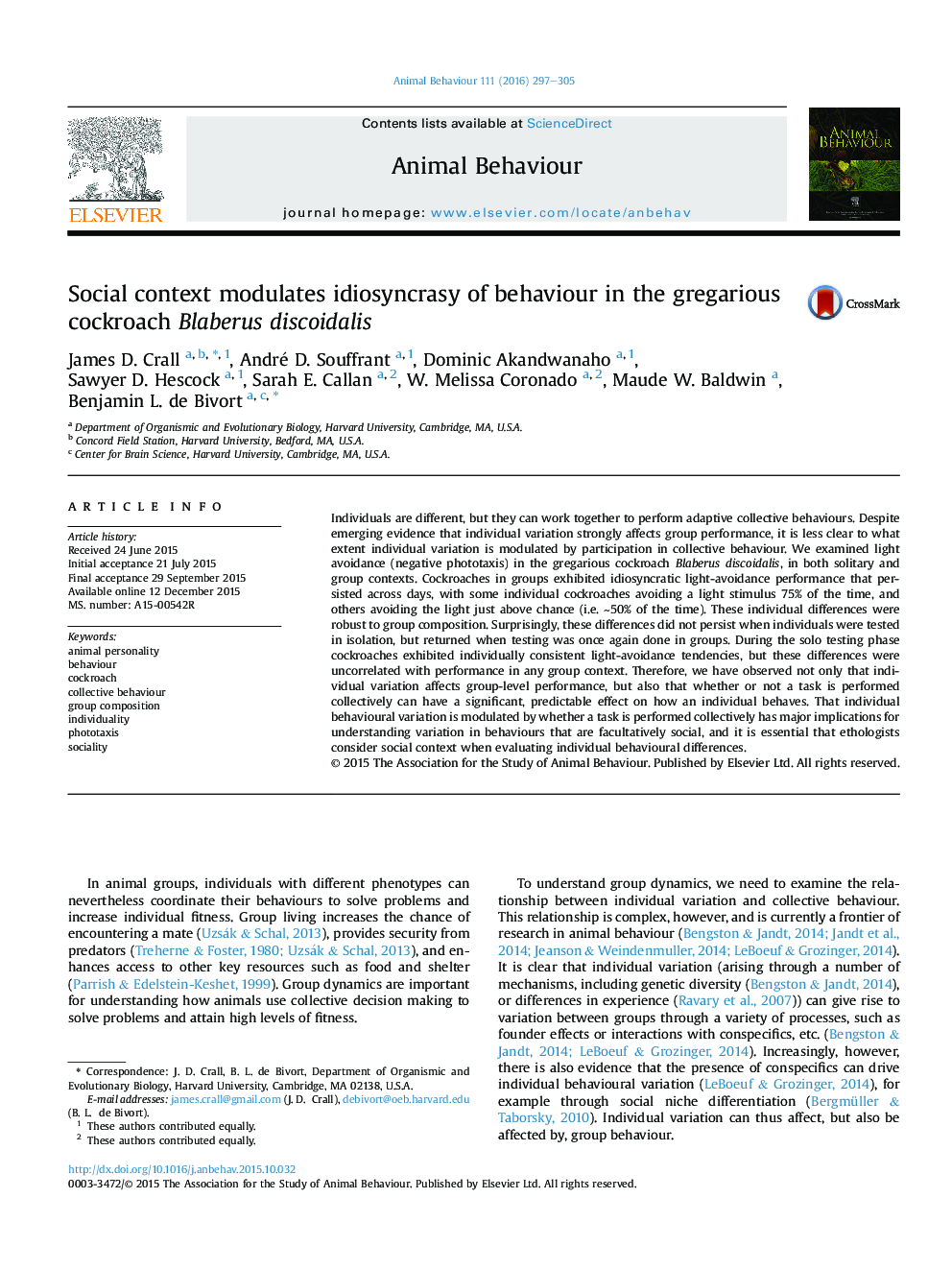| Article ID | Journal | Published Year | Pages | File Type |
|---|---|---|---|---|
| 8489442 | Animal Behaviour | 2016 | 9 Pages |
Abstract
Individuals are different, but they can work together to perform adaptive collective behaviours. Despite emerging evidence that individual variation strongly affects group performance, it is less clear to what extent individual variation is modulated by participation in collective behaviour. We examined light avoidance (negative phototaxis) in the gregarious cockroach Blaberus discoidalis, in both solitary and group contexts. Cockroaches in groups exhibited idiosyncratic light-avoidance performance that persisted across days, with some individual cockroaches avoiding a light stimulus 75% of the time, and others avoiding the light just above chance (i.e. â¼50% of the time). These individual differences were robust to group composition. Surprisingly, these differences did not persist when individuals were tested in isolation, but returned when testing was once again done in groups. During the solo testing phase cockroaches exhibited individually consistent light-avoidance tendencies, but these differences were uncorrelated with performance in any group context. Therefore, we have observed not only that individual variation affects group-level performance, but also that whether or not a task is performed collectively can have a significant, predictable effect on how an individual behaves. That individual behavioural variation is modulated by whether a task is performed collectively has major implications for understanding variation in behaviours that are facultatively social, and it is essential that ethologists consider social context when evaluating individual behavioural differences.
Keywords
Related Topics
Life Sciences
Agricultural and Biological Sciences
Animal Science and Zoology
Authors
James D. Crall, André D. Souffrant, Dominic Akandwanaho, Sawyer D. Hescock, Sarah E. Callan, W. Melissa Coronado, Maude W. Baldwin, Benjamin L. de Bivort,
